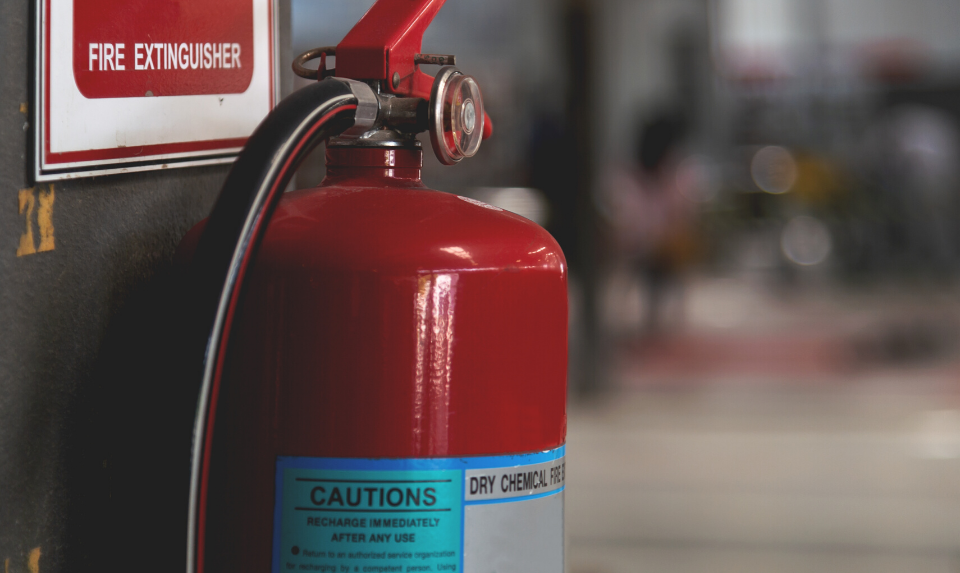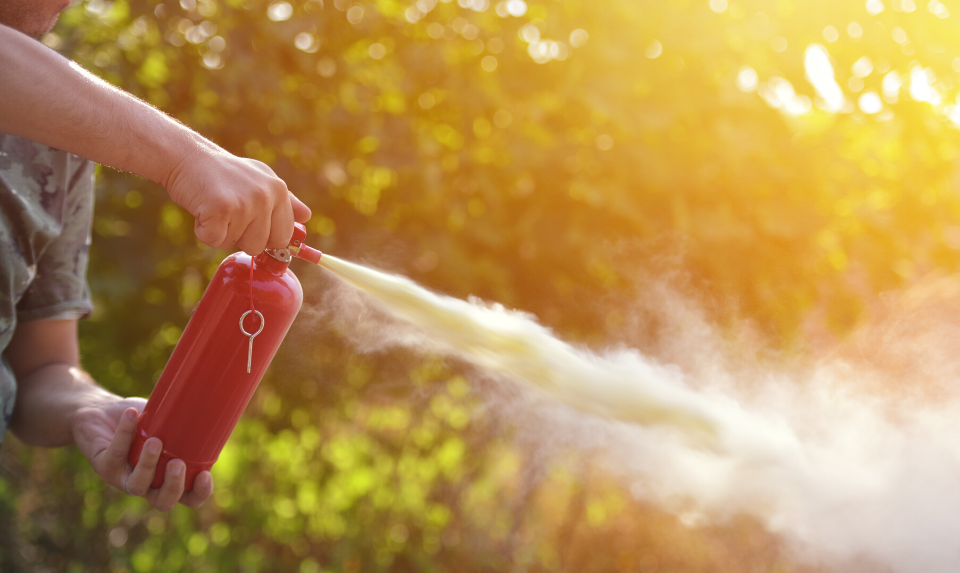A fire extinguisher can be a lifesaver. Located near an exit, in an easy-to-grab place, it can put out a small fire before the firefighters come, or at least contain the flames while you leave.
Every household extinguishers are classified A, B, or C (or a combination of these) on the tag to designate which types of fires — ordinary flammable liquids, combustibles, or electrical—you can use them on. Numerous of the ones marketed at home stores are labeled A:B:C and fight all types of fires.
The principal characteristic among home extinguishers is the size. In numerous cases, more significant is more reliable, but sometimes the biggest extinguishers are heavy to manage. (The weight on an extinguisher relates to the quantity of chemical inside; the canister adds several more weight.)

There is also a distinction between rechargeable extinguishers, with metal pipes, and disposable ones, which have artificial valves. A rechargeable will cost more, but refilling it once the tension gauge shows use or time has consumed the contents is still less costly than buying a new extinguisher.
National Fire Protection Association suggests having one for each floor. But nothing can substitute for the most critical safety tool: a fire plan, no matter how many you have. Ensure everyone in the family understands how to get out in a rush, where to meet, and call 911. Even if you have seen you put out the fire on your own, do not cancel that emergency call. Let the pros to decide if it’s entirely out.
Each household extinguisher is marked A, B, or C. In the fine print, the higher the number heading each letter, the greater the effectiveness against a specific type of fire.
Reading the Label
Every household extinguisher is marked A, B, or C, which tells you the types of fires it is more effective. A is ordinary combustibles like paper, wood, and cloth; B is flammable liquids, such as cooking oil or gasoline; and C is electricity.
In the fine print on the label, the letters are headed by numbers — for example, 3-A:40-B:C — These are classification rating. The figures, indicated by Underwriters Laboratories, to tell the extinguisher’s corresponding effectiveness towards each type of fire, despite its weight or the substance it uses. The higher the number, the greater the capability (and as expected, the higher the price). So an extinguisher with a 4-A grade is more efficient on ordinary combustibles compared to a 2-A one. The C designation offers no number; it merely means the extinguisher’s substances will not conduct electricity.
Handling a Fire Extinguisher
Fire safety specialists suggest you to learn how to handle an extinguisher before an accident occurs. Ask the fire department to see if they allow homeowner exercise. Have extinguishers where you can view and approach them quickly, near the room’s exit. So, you can attack the fire with your back to the door and make a swift escape if it gets out of control.
Whenever you have used an extinguisher, whether or not it is dried out, you require to reinstate it or refill it immediately. Similar to any extinguisher whose pressure gauge shifts out of the green zone toward the red over time. Fire extinguisher manufacturers charge about $15 to refill a standard 5-pound A:B:C extinguisher, granted it has a metal valve. The ones with plastic valves are not refillable and should be discarded after use.
Staying Ready

Home fire extinguishers can lose pressure over time, making it ineffective when you require it. But if you are the type who neglects to look at your gauges regularly, consider a sensor system that works with a 9-volt battery, tracking the extinguisher’s pressure. If the mark gets low, it sounds an alert and flashes a red light, prompting you to have it refilled. It also triggers a notification when it has been pulled from the wall, as it would be throughout a fire. And similar to a smoke detector, the sensor beeps when it is low in battery.
A more detailed version can be wired to the house’s security system; the alarm company receives a signal when it is used and, in turn, call 911. Cost is about $200 for the stand-alone model or about $100 per extinguisher for the security system model, not including installation and fees.
A stovetop fire extinguisher is about $49 for the set of two cans required for four burners.